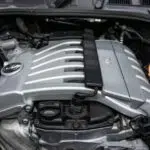Despite being an engine with full strength, the Volkswagen 2.5 engine comes with loads of issues.
The four most common Volkswagen 2.5 engine problems include:
- N80 Valve Failure
- Ignition Coil Failure
- Serpentine Belt Issues
- Inability to Retain Vacuum Pressure
The Volkswagen 2.5 often appears to be strange in its evolution. After its debut in 1995, it was also discontinued the same year. Amazingly, it came back ten years later and lasted for more than nine years.
The above common problems can be critical and devastating to the health and life of your engine if not solved quickly. Despite these problems, the engine is still reliable and strong.
However, all engines develop faults, just like Volkswagen 2.5 engines.
TABLE OF CONTENTS
What Are The Most Common Volkswagen 2.5 Engine Issues?
1. N80 Valve Failure
Also called the canister purge valve, the N80 Valve makes up part of the Evaporation Emission Control System (EVAP). This part helps to regulate the amount of fuel coming into the intake valve manifold to burn.
When the fuel tank generates fuel vapor, rather than allowing it to escape into the atmosphere, the EVAP system helps to hold the vapor inside the charcoal canister. It doesn’t just keep vapor; the system gradually releases the vapor into the engine which the engine burns.
However, the control of the flow of the fuel is a function of the health of the canister purge valve. The solenoid, as the name suggests, basically purges the EVAP system.
The canister purge valve is primarily responsible for the flow of the vapor into the engine. The valve controls the frequency and amount of the vapors that flows into the engine. When it gets bad, the fuel vapor gets into the engine indiscriminately and without control.
The downside of this problem is that it can be very difficult to diagnose. When the valve begins to develop a problem, the On-Board Diagnostic II (OBDII) scanner will not be able to detect the issue as well.
As a result of this, the problem begins to compound, especially for people who are not familiar with it. The Volkswagen 2.5, however, has more than an N80 Valve which makes it more difficult to know when it will become bad.
What Signs To Watch Out For
Let me discuss briefly some symptoms to watch out for when your N80 Valve begins to fail.
- Check Engine Light: A failing or faulty N80 Valve in Volkswagen 2.5 will cause the engine light to come on.
- CEL Illuminated: This symptom is often observed when your engine starts to perform poorly. It may also be accompanied by rough idle. Continuous N80 Valve failure may require checking the entire EVAP system. Other related symptoms of a faulty N80 Valve include a P0441 error code and P0172 error code.
- Lower Gas Mileage: A bad N80 valve is a recipe for lower gas mileage. The reason is simple: if the amount of fuel vapor that gets into the engine is not measured, your car will have to burn a larger-than-normal amount of fuel. This will result in increased gas consumption and so cause lower gas mileage.
- Other Symptoms: Include engine problems, the vehicle won’t start, and rough idle.
What Fix To Apply
I know you will be worried about the cost of fixing a faulty N80 Valve. However, you don’t have to spend much on its replacement.
Fortunately, it is very cheap to replace. With about $200, you can get N80 Valve replaced if you have DIY experience. You may budget about $300 if you drive down to a mechanic shop.
2. Ignition Coil Failure
Ignition coils are responsible for converting the battery’s voltage to a higher value. Once the conversion takes place, it is then transferred through the spark plugs.
These two components, combined, play an important part in the combustion process going on in the engine. Ignition can begin to fail due to some reasons such as moisture in the engine, leaking valve covers, or bad ignition cables.
When there is moisture in the cable, it reduces the engine’s excellent performance. The cables help to transfer the converted voltage. These cables must, however, be at their best to prevent the loss of excess heat.
What Signs To Watch Out For
Having understood what ignition coils are and how they work, let’s briefly discuss what to watch out for if they begin to fail.
- Engine Stalls: A faulty ignition coil will cause the engine to stall since combustion will not take place properly.
- Power Loss: You may sometimes be lucky if your engine starts, even when you have a failing ignition coil. However, the engine will always experience power loss which will affect its overall function.
- Vehicle Not Starting: Improper combustion process in the engine will result in start difficulties. Other symptoms of an ignition coil problem in Volkswagen 2.5 include engine misfires, constant CEL illumination.
What Fix To Apply
I recommend replacing a faulty ignition coil once you notice any of the above symptoms. A replacement is easier if you have an idea of the ignition coil replacement. It is, however, best to replace it once you cover 40,000 to 50,000 miles.
3. Serpentine Belt Issues
As often referred to by some people as a drive belt or accessory belt, it doesn’t usually occur as one of the VW 2.5 engine problems. However, the tensioners are responsible for its failure.
Serpentine belts are responsible for lowering your Volkswagen 2.5 accessories. It helps to power the A/C compressor, water pump, and other vital components. It must ensure the belt does not derail and keep it tight.
Tensioners often fail due to two primary reasons. First is, getting a poor tensioner from the factor which the chances are very low.
Secondly, it may fail as a result of wear and tear. Usually, one of the best ways to get the best out of your car is by changing your serpentine belt when your engine has covered about 80,000 to 100,000 miles.
With proper maintenance, you may need to change the serpentine belt twice or more throughout the lifespan of your vehicle.
What Signs To Watch Out For
Before blowing things out of proportion, let’s see some symptoms associated with a failing serpentine belt in the Volkswagen 2.5 engine.
- Overheating: A failing serpentine belt helps turn various engine parts. It is also responsible for providing power to cool the engine. Once it fails to turn, it will cause the engine to overheat as the water pump will not turn as well. Prompt action is needed once your engine begins to overheat.
- Failure Of The Power Steering And A/C: A completely failed serpentine belt will result in a complete breakdown of the car. Additionally, it will be accompanied by loss of power steering and failure of the A/C. This is because the engine will fail to cool as usual.
- Squealing Noise: Misalignment or slippage of the serpentine belt is one of the primary reasons you hear a squealing noise from your Volkswagen 2.5 engine. Once the belt slips off, the usual components will not turn, as usual, forcing other parts of the engine to work which results in noise.
What Fix To Apply
Overall, it is simple to fix the above problems I have highlighted. A faulty serpentine will impede the overall performance of your engine.
It is, however, important to change or replace the serpentine belt as quickly as possible. Fortunately, you may not need to spend much to fix this problem.
4. Inability To Retain Vacuum Pressure
This VW 2.5 engine problem happens when the rubber gasket fails to seal properly as it should. It is, however, a common problem associated with the engine.
However, as the temperature of the engine rise, it is, however, normal for the gasket to deteriorate as quickly as possible after covering certain miles.
The inability of the engine to retain vacuum pressure is traceable to vacuum failure. Once it begins to leak, it affects the general function of the engine.
A vacuum pump provides an additional vacuum that helps boost the car’s braking system. Once wear and tear begins to set in, the rubber gasket will start leaking oil.
What Signs To Watch Out For
Summarily, some symptoms indicate you have a vacuum pressure problem. Let’s take a look at them.
- Oil Leak: Oil is essential for braking the system. A leak in the vacuum pump will cause oil to leak, making it one of the earlier symptoms to watch out for.
- Stiff Brake: Oil shortage will cause the brake pedal to stuff which makes it difficult to respond when applied. A failing vacuum pump will also cause intermittent power braking.
- Sporadic Idling: Lack of vacuum pressure which results from a vacuum leak causes excess air to get into the engine. When this happens, the engine will not run smoothly. The engine will idle faster than normal, especially when you’re at a stop.
- Other Symptoms: Include vacuum sounds, engine hesitation, and the check engine light may come on.
What Fix To Apply
The replacement or repair of the vacuum pump in auto or manual transmission can be tedious.
However, either of the options may cost you about a thousand dollars in a mechanic shop. If you are a DIY expert, you may spend less.
FAQs
1. Can I Repair The N80 Purge Solenoid?
Yes, you can repair the canister purge solenoid. Guess what? It is a relatively cost-effective repair.
After diagnosing and establishing that the faulty canister purge valve is the reason for the signs you notice, the next thing to do is to clean the valve.
A DIY procedure for getting rid of the dust, rust and dirt doesn’t take much time; it doesn’t require special skill or tools as well.
If you’ll be cleaning the valve, you should also ensure you blow compressed air into the main entry point of the carbon canister. Don’t forget to also flush out the dirt in the diameter breather hose.
Fixing the canister purge valve may cost something in the region of $100 and $200. You’ll have to start by diagnosing what the issues actually cause the signs you’re seeing.
This is because an illuminating check engine light can result from a wide range of engine faults. This also applies to high gas consumption.
2. How Long Can The Volkswagen 2.5 Engine Last?
With proper maintenance, your Volkswagen 2.5 engine will last up to 200,000 miles or more.
However, as the car ages, the engine will continue to deteriorate but will timely maintenance, and you will enjoy it for a longer period.
You may want to ask, how can I make my Volkswagen 2.5 Engine last this long and above?
The best way to get the best out of your Volkswagen 2.5 engine is to provide timely maintenance immediately if you notice any strange symptoms from the engine.
3. What Are The Specifications Of The Volkswagen 2.5 Engine?
| Features: | Specs: |
| Power | 170HP available @ 5700 rpm |
| Engine | 2.5L I-5 |
| Torque | 177 available @ 4,250 rpm |
| Combustion type | Natural aspiration |
| Valvetrain layout | DOHC |
| Drivetrain | Front-wheel drive and front engine |
| Displacement | 153ci |
| Engine type | Inline 5 |
| Transmission | 6 Triptronic |
Final Thoughts
Having a stopover en route to a place to fix certain problems in your engine isn’t only terrifying but also time-wasting.
However, my simple advice to avoid further VW 2.5 Engine Problems is to provide adequate maintenance.
On the other hand, replacing the above fault-prone parts should be best carried out using OEM parts. They are reliable and effective compared to after-market parts.
Except if you are sure of the originality of aftermarket parts, you should not use them if you doubt their quality as they can shut down your engine and reduce their lifespan. Ignoring these symptoms and not providing a timely solution can damage the engine indefinitely.




